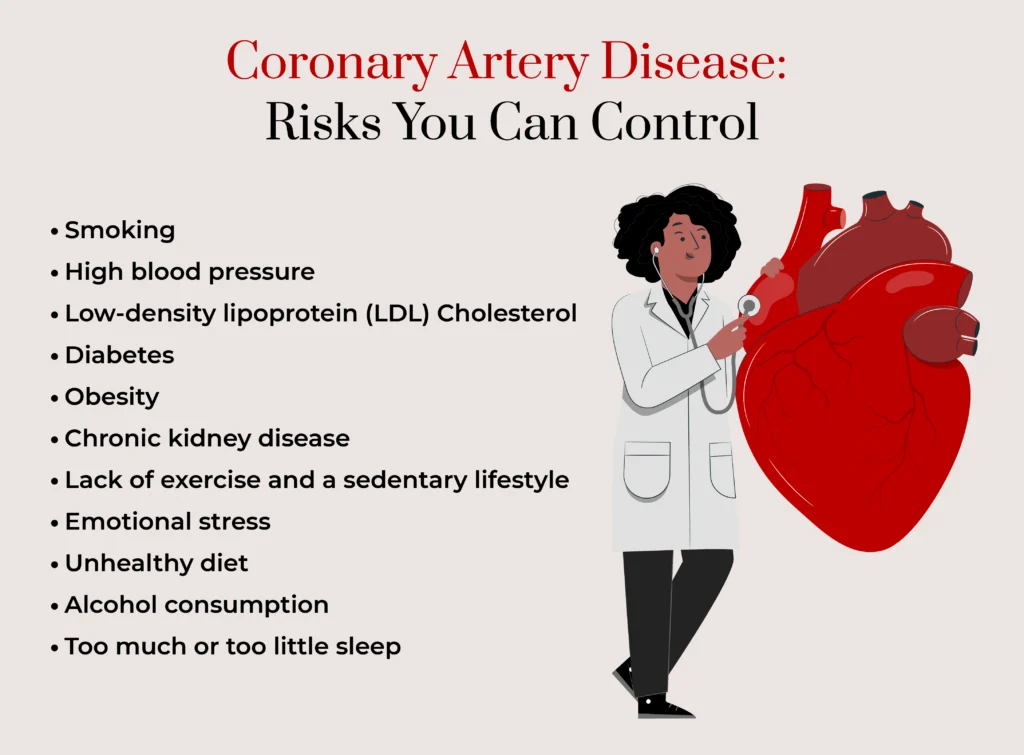The U.S. Department of Veterans Affairs (the VA) recognizes coronary artery disease (CAD) as a disability for purposes of receiving veterans’ benefits, including monthly disability compensation. Coronary artery disease claims are common among military veterans; about one of every five VA disability claims includes a claim for a cardiovascular condition.
There are four possible coronary artery disease VA ratings: 10%, 30%, 60%, and 100%.
If you need help obtaining a VA rating for coronary artery disease, please call Stone Rose Law at (480) 498-8998 or use our contact form to get in touch with a VA disability attorney for a free consultation.
The VA rates CAD based on the severity of the condition and its impact on your ability to work and perform daily activities.
The disability rating you receive depends in part on a stress test that measures your heart condition while exercising, the metabolic equivalents of task, or “MET” test. During METs testing, your doctor will be looking for symptoms like dizziness and fatigue that indicate your muscles are not receiving the amount of oxygen they need.
Your doctor can also use several other means to diagnose CAD, including:

Under 38 CFR § 4.104, the VA rates coronary artery disease as one of four possible rating levels under Diagnostic Code 7005.
| VA Disability Rating | Eligibility Criteria for VA Disability Benefits |
| 10% | Workload of greater than 7 METs but not greater than 10 METs results in dyspnea, fatigue, angina, dizziness, or syncope, or; continuous medication required. |
| 30% | Workload of greater than 5 METs but not greater than 7 METs results in dyspnea, fatigue, angina, dizziness, or syncope, or; evidence of cardiac hypertrophy or dilatation on electrocardiogram, echocardiogram, or X-ray. |
| 60% | More than one episode of acute congestive heart failure in the past year, or; workload of greater than 3 METs but not greater than 5 METs results in dyspnea, fatigue, angina, dizziness, or syncope, or; left ventricular dysfunction with an ejection fraction of 30 to 50 percent. |
| 100% | With documented coronary artery disease resulting in: Chronic congestive heart failure, or; workload of 3 METs or less results in dyspnea, fatigue, angina, dizziness, or syncope, or; left ventricular dysfunction with an ejection fraction of less than 30 percent. |
If your coronary artery disease condition keeps you from holding down substantially gainful employment, then even if you do not receive a 100% disability rating, you may still qualify for total disability benefits through total disability based on individual unemployability (TDIU).
Most veterans who receive TDIU benefits qualify for what are known as schedular TDIU benefits. You can qualify for schedular TDIU in one of two ways:
See our VA Disability Calculator to learn more about disability ratings generally and how combined disability ratings work.
In some exceptional cases, the VA can also provide TDIU on an extraschedular basis if you have an exceptional or unusual disability that keeps you from substantially gainful employment.
Unless you qualify for CAD-based disability benefits based on a presumptive service connection (see below), your VA benefits claim must establish a service connection by convincing the VA that the following three elements:
Your CAD condition can be primarily caused by your military service, or can be a secondary condition caused by another existing VA-rated disability. Examples of CAD as a secondary disability are when the condition is caused by another service-connected disability, like depression or post-traumatic stress disorder (PTSD).
An important difference between CAD as a primary service connection and as a secondary connection is that for a primary service connection, you must prove a nexus between the in-service event or circumstance, while for a secondary disability, you need to show a nexus between CAD and the other VA-recognized disability.
In either event, you will need to include with your application for VA benefits evidence in the form of your medical records, military records, and written statements from people you know that attest to the effects your heart condition has on your ability to work and to engage in daily life activities.
Agent Orange was an herbicide used extensively during the conflict in Vietnam. The VA has determined that exposure to Agent Orange is linked to coronary artery disease.
Accordingly, Vietnam War-era veterans may be able to qualify for coronary artery disease-related disability benefits through a presumptive service connection if they can show that they served in the following places and times:
A presumptive service connection to a current diagnosis for CAD means that you do not need to show in your benefits claim application that your heart condition is service-connected. This can make it much easier for qualified veterans to receive a disability rating for a coronary artery disease condition.
At Stone Rose Law, we are board-certified VA claims lawyers. We help veterans with initial and supplemental claims for all kinds of disabling conditions, including coronary artery disease.
A Stone Rose Law VA disability lawyer can help you prepare your disability claim, monitor your claim status, and consult with you before disability examinations at no cost to you.
If the VA denies your initial claim for CAD benefits, then our VA benefits law firm will assign a VA disability appeals lawyer to help make an appeal with the Board of Veterans Appeals. You will not pay your VA disability lawyer any fees unless we win your appeal.
To learn more about how one of our VA disability lawyers can help you with your VA disability compensation claim or appeal, request a free assistance consultation at (480) 498-8998 or use our contact form.